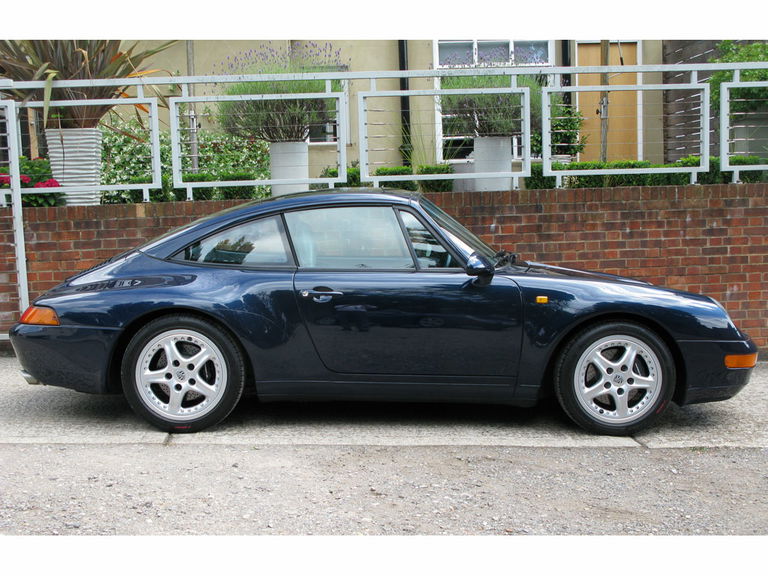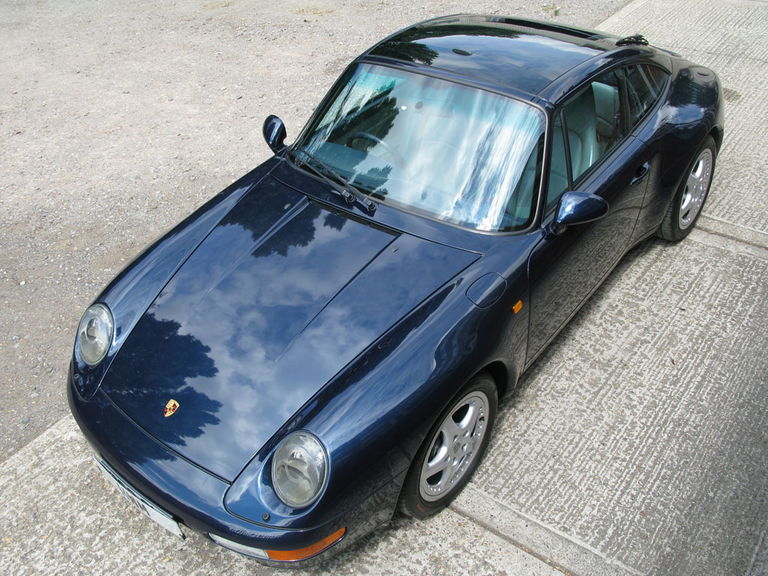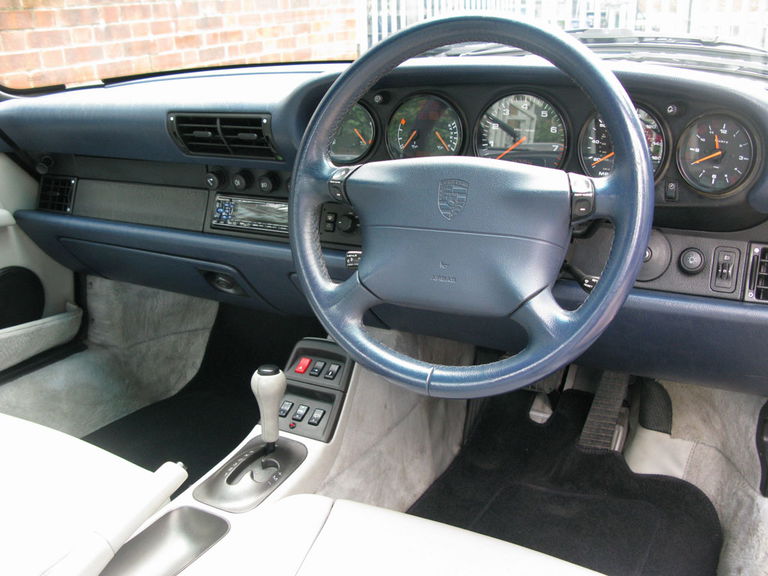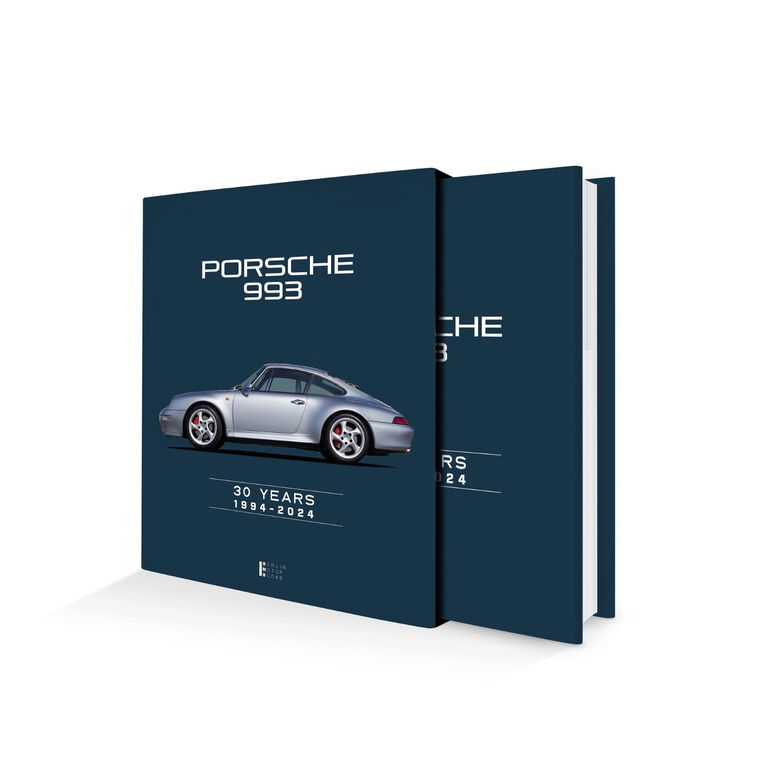The 993 model year is famously the last of the air-cooled 911s and was redesigned from the ground up, only borrowing 20% of its parts from the previous generation. Significant technical advances, including a new light-alloy subframe with a coil and wishbone suspension, an all new engine and newly standard 6 speed transmission, made significant progress in creating a more civilized car and a greatly improved driving experience. Designed by Tony Hatter, the 993 retained the classic 911 shape but featured updated exterior panels, significantly flared wheel arches, and a smoother front and rear bumper design. The aggressive stance of the wide-style body accommodated the new multi-link rear suspension which gave the car better stability. Newly improved handling made the car more planted and helped to reduce oversteer in cornering as well as improving ride quality and reducing interior noise. The acclaimed rear design sacrificed top speeds for better handling making it the perfect weekend partner to tackle the narrow, winding English country roads. Simply put, the new design and technical improvements meant the 993 generation Porsche hit the sweet spot between usability and fun.
The 993 Targa was released in the 1996 model year and debuted a retractable glass roof dubbed the “greenhouse” system which would continue to feature on the 996 and 997 models. The glass roof slides underneath the rear window creating an open air motoring experience without the hassle of a convertible. Previous models had featured a removable roof and an enlarged b pillar that served to function as a roll bar. The new design allowed the Targa to retain the same profile design as the other Carrera variants and freed the driver from the inconvenience of storing the detached roof. This generation Targa is therefore an optimised version, offering the best of the air-cooled benefits alongside the modern, less cumbersome Targa top.
Continue reading







































